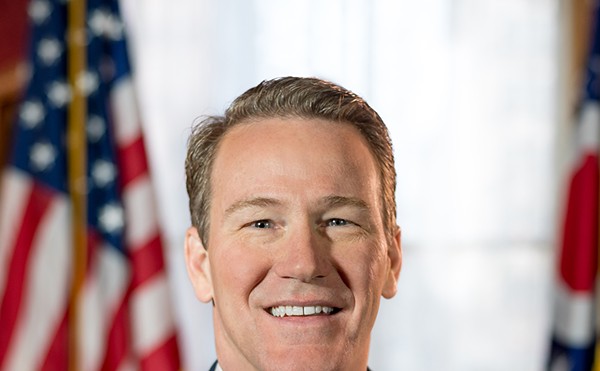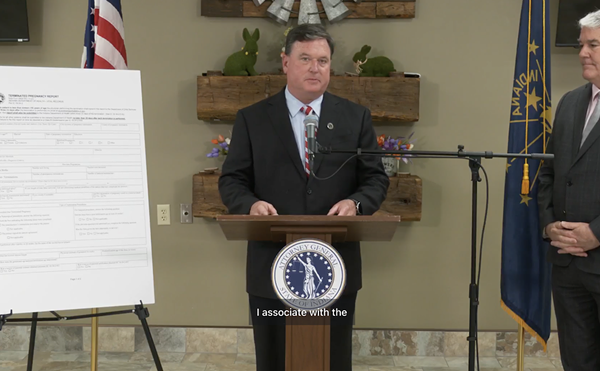"Toe to Toe in Over-the-Rhine" was the cover story headline in the inaugural issue of CityBeat on Nov. 17, 1994. Is there any better example of the saying "The more things change the more they stay the same"?
The story's subheadline could have been written last week: "Advocates for redevelopment and for low-income housing face off on the future of Cincinnati's oldest neighborhood, while city officials figure out their next move."
Figuring out our next move is Cincinnati's official pastime, much more than baseball or cornhole or chili-eating. It's one of the things we do best.
Instead of the recently adopted regional slogan "Cincinnati: All Together Surprising," we might want to try "Cincinnati: Figuring Out Our Next Move."
I think ESPN.com's Pat Forde would see the logic in that promotional line.
The college sports columnist wrote a long article last week that generated a lot of talk here and around the country. He ostensibly previewed the Bengals' NFL draft strategy in light of the team's litany of player arrests, but he spent a good deal of space contemplating Cincinnati's collective faults, quirks and "unique" attributes.
Forde's conclusion near the top of his article: "It just might be the strangest city in Flyover America."
He wonders whether a city that's "famously conservative and proudly prudish" will continue to support the Bengals and their players' criminal behavior — yet he notices that our sports heroes include "dishonest" Pete Rose, "racially disparaging" Marge Schott and "profane" Bob Huggins.
Forde then launches into an astute and nuanced — for a sports columnist anyway — discussion of all the contradictions that make Cincinnati what it is today. He spent 17 years working for The Louisville Courier-Journal before joining ESPN, so he seems to have a pretty good sense of this area.
This paragraph boils down Forde's article fairly well: "Today, nobody calls this a boomtown. The metro area population is around 2 million, placing it in the top 25 nationally, and there are many major corporations located here. But its residents admit that Cincinnati is as likely to think small as it is to think big: resistant to change, wary of the outside world and happy within its own cultural cocoon."
Local folks have reacted to the column with a mix of embarrassment, defiance, pride and denial — the range of emotions you'd expect. But there's no question Forde hit on something.
And that takes us back to Over-the-Rhine, where resistance and wariness remain the dominant themes.
The 1994 CityBeat story depicted the two major camps in the neighborhood struggle facing off over whether to protect low-income housing as market-rate condos and other development came to Over-the-Rhine. There was little trust between the camps, represented by Buddy Gray and Restoc (Race Street Tenant Organization Cooperative) on the one side and city government and business leaders on the other.
The most amusing part of the article was the sense that this late 1994 confrontation would be the last straw: The cover text read, "Two Sides Face a Final Showdown on the Future of Over-the-Rhine."
If only!
No, almost 13 years later this community continues to face "final showdowns" on what to do about Over-the-Rhine. Remember, we're still figuring out our next move.
Yet many of the showdown players have changed over the years, and there's finally a feeling that momentum is moving forward.
The personal animosity between Gray and Jim Tarbell, a restaurant owner in '94 and a city councilman today, ended with Gray's death. Leadership at City Hall and on the OTR Community Council and OTR Chamber of Commerce is different. Corporate leadership has turned over as well, opening the door to a new approach for development funding via 3CDC (Cincinnati Center City Development Corp.).
Fortunes have ebbed and flowed in Over-the-Rhine, but significant positive steps are evident:
· The arts are leading the way in bringing more visitors to the area. The Art Academy of Cincinnati took a huge gamble moving from Eden Park to 12th and Jackson, but its coverted warehouse space has become an anchor for a burgeoning arts district. Know Theatre and New Stage Collective opened new performing spaces nearby, and the School for Creative and Performing Arts will build a brand new K-12 school a block away.
The neighborhood arts mainstays — Music Hall tenants, Ensemble Theatre, Pendleton Art Center, Main Street galleries — have hung on during lean years, hoping eventually to be part of an OTR renaissance. Their patience and their loyalty might finally be rewarded if all this arts action creates a critical mass for visitors and residents alike.
· Private and public funds are going toward a coordinated effort to improve residential life in Over-the-Rhine, headed by 3CDC. Millions of dollars in local corporate investment and government grants are helping 3CDC buy up property in Over-the-Rhine in anticipation of rehab work — many of the buildings and lots are empty, and some corner markets have purposefully been targeted in order to chase out the criminal element.
As 3CDC President Stephen Leeper says, no neighborhood resident — whether low-income, middle-income or high-income — likes living next door to a market that sells nothing more than 40-ounce beers and cheap wine. Anything legitimate that these markets sold, he says, can be found at the Kroger on Vine Street.
· New "urbanist" voices are breaking through the collective political and media noise that dominates civic conversations here. I really liked Jeff Stec's guest editorial in the April 29 Enquirer, in which he pushed us to adopt a truly unique vision for the urban core. He'd use Cincinnati's geography to our advantage and create a car-less basin on both sides of the Ohio River.
John Schneider has been quoted often in CityBeat about the need for Cincinnati to build a better public transit system and to use that transit system to spur development and housing. His ideas are gaining steam.
Pat Clifford, Mary Burke and others are the new generation of advocates for low-income residents in Over-the-Rhine, and we have to trust their dedication and instincts. Leeper, Darrick Dansby, Mayor Mark Mallory and others are the new generation of advocates for business and housing growth in OTR, and we have to trust their dedication and instincts as well.
The key, of course, is for them to let go of old rivalries and old showdowns and start to trust each other. There are plenty of signs that it's starting to happen. It's about time.
Contact john fox: [email protected]





